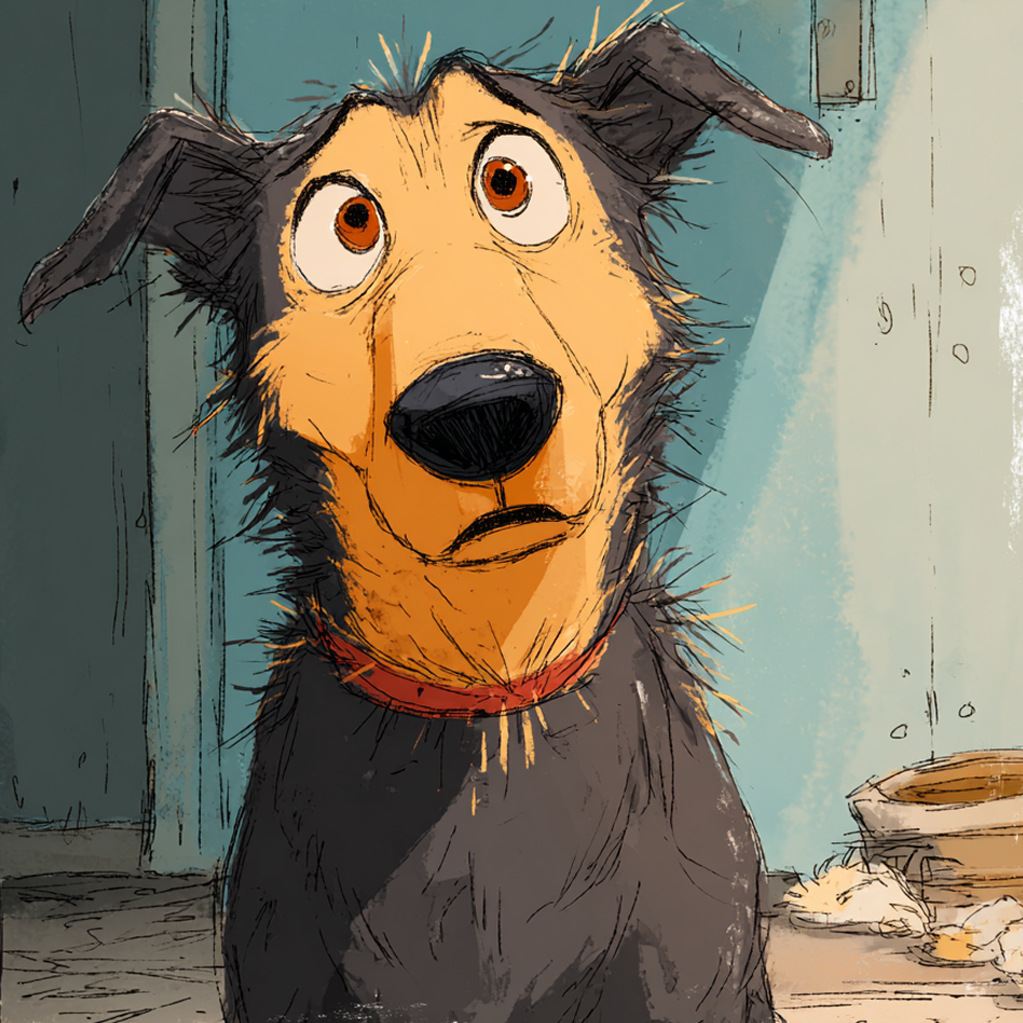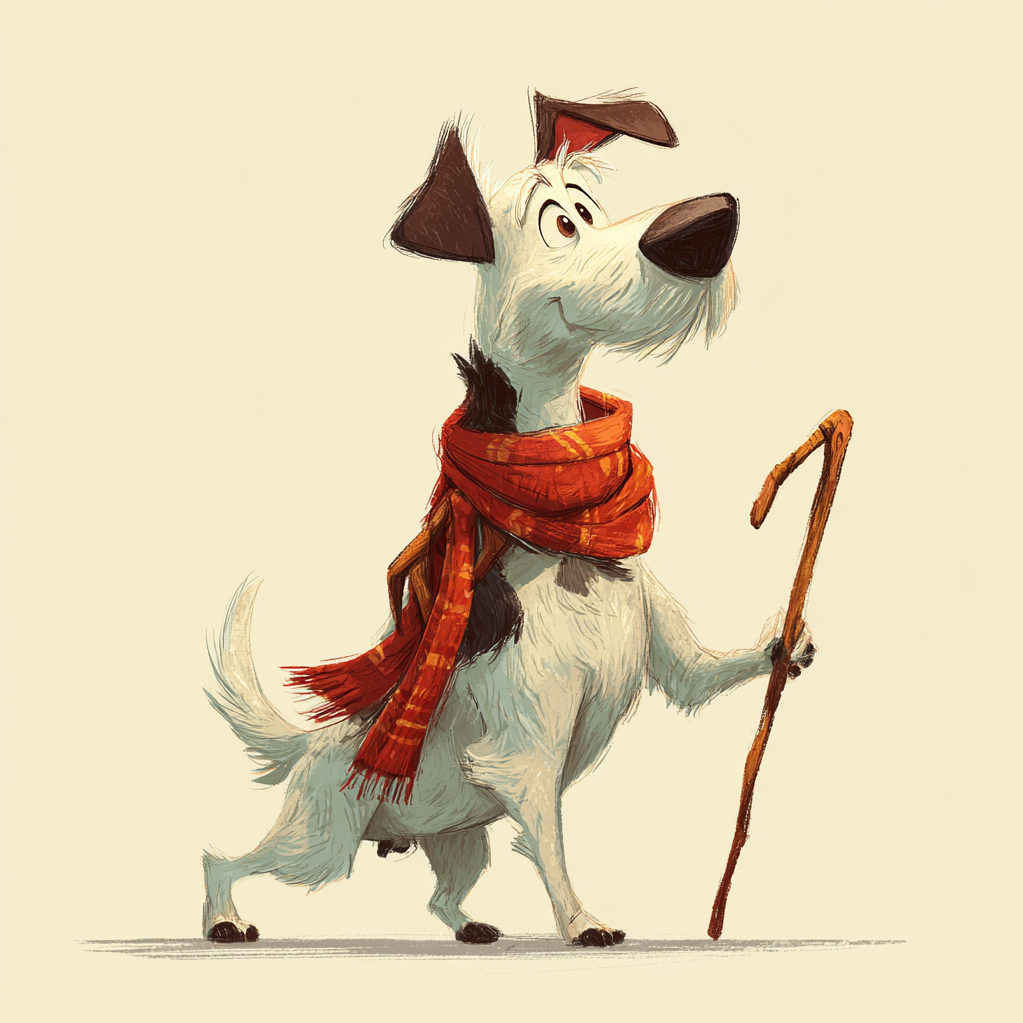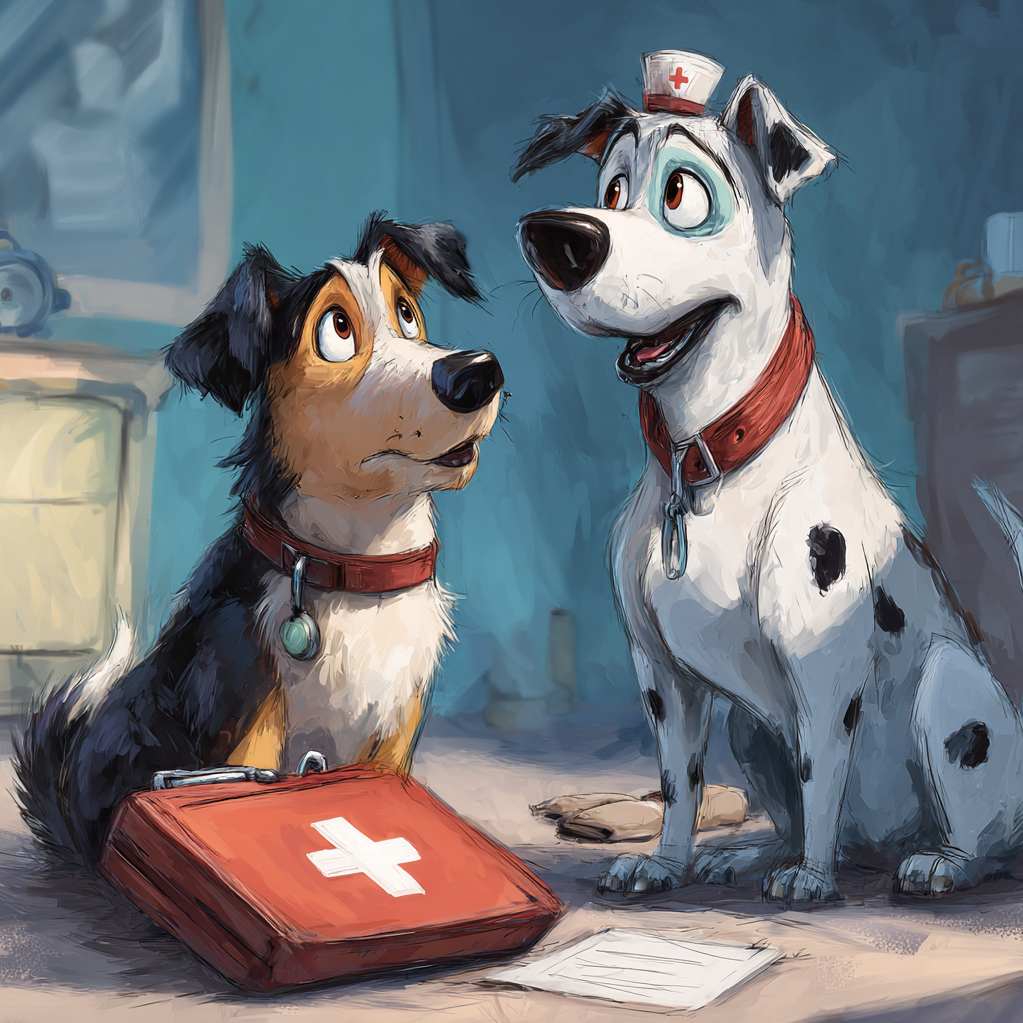The Silent Snarl: Navigating the Lightning-Strike Terror of Dog Fights
One moment, tails wag. The next, the air shreds. A whirlwind of teeth, snarls, and piercing shrieks erupts. Time distorts. Your heart hammers against your ribs. This isn’t play gone rough; it’s primal aggression unleashed. The aftermath lingers – punctured skin, trembling dogs, the acrid scent of fear, and the crushing weight of “What did I do wrong?” Blame is a useless compass here. Understanding is your lifeline. Dog fights aren’t about “bad dogs.” They’re catastrophic communication failures, fear explosions, or resource sieges erupting in a heartbeat. Knowing the why, mastering the how of safe separation, and preventing the next strike isn’t just training; it’s management for the heart of your pack.

Beyond the Bite: Decoding the Volatile Cocktail of Causes
Forget simplistic labels like “dominant” or “mean.” Canine aggression is a complex, context-driven response, often born from profound discomfort or perceived threat. It’s a desperate language spoken when other signals are ignored or overwhelmed:
- Fear & Anxiety’s Vicious Claw: This is the most common trigger. A dog feeling trapped, overwhelmed, or profoundly insecure may lash out preemptively. Think of the rescue dog with unknown trauma flinching at an approach, the small dog terrified by a boisterous larger dog’s advance, or the dog startled awake. Their aggression is a shield, screaming “GO AWAY!” through bared teeth. Punishing fear-aggression only deepens the terror, guaranteeing worse explosions later.
- Resource Guarding: The Possession Paradox: Food. Toys. Beds. Space. A beloved human. To a dog, these are survival stakes. When another dog (or person) approaches a guarded resource, the possessor may escalate from subtle warnings (freezing, stiffening, low growl) to a full-blown defensive attack. It’s not greed; it’s a deep-seated drive to protect perceived essentials. Genetics often plays a role, making some dogs inherently more prone to guarding.
- Frustration Barrier Explosions: Picture a dog straining on a leash, desperate to reach a playmate or investigate a distraction, but held back. The pent-up arousal and inability to act can boil over into redirected aggression – lashing out at the nearest target, often the dog walking beside them or even the handler. Barrier frustration (fence-fighting) is a classic example, where two dogs erupt at each other through a fence they can’t breach.
- Pain’s Unseen Torch: An otherwise tolerant dog experiencing chronic pain (arthritis, dental disease, internal issues) or sudden injury can become unpredictably snappish. A friendly nudge from a housemate might hit a sore spot, triggering a defensive bite. Any sudden onset of aggression warrants an immediate veterinary exam to rule out pain as the root cause.
- Predatory Drift: The Chilling Switch: Rare but terrifying, this occurs when play or herding instincts between dogs suddenly escalates into a genuine predatory sequence. The movement, sounds, or size of the other dog (especially small, fast-moving, or squealing dogs) can trigger a hardwired neurological switch. Play bows vanish, replaced by silent, focused stalking and a potentially lethal bite. This requires extreme management and professional intervention.
- Miscommunication & Social Incompatibility: Not all dogs like all other dogs. Play styles clash. Energy levels mismatch. Body language gets misread. A rude, in-your-face greeting from one dog can be perceived as a dire threat by a more reserved dog. Lack of proper socialization can leave dogs ill-equipped to read and send calming signals, turning minor tension into major conflict.
- Medical Mayhem: Neurological disorders, cognitive decline in seniors, severe thyroid imbalances, or brain tumors can dramatically alter personality and trigger uncharacteristic aggression. Again, rule out medical causes first.
The Fracture Point: Recognizing the Precursors Before the Storm
Fights rarely ignite from zero. There’s usually a grim ballet of escalating tension. Learning these subtle (and not-so-subtle) precursors is your critical early warning system:
- The Freeze: A sudden, unnatural stillness. The world narrows for the dog. Muscles lock. This is the point of no return being approached.
- Hard Eyes & Whale Eye: The eyes lock, widen, and the whites show prominently. A stare radiating tension and potential threat.
- Body Lock: Muscles visibly tense. The body becomes rigid, leaning slightly forward (offensive) or back (defensive).
- Lip Curtain: Lips pull back vertically, revealing front teeth. Often accompanied by a low, rumbling growl. This is a clear, desperate warning: “Back off NOW.”
- Piloerection: Hair stands up along the spine (hackles). Signals intense arousal, fear, or aggression.
- Low, Sustained Growl: Deeper and more menacing than a play growl. A vocal red flag.
- Stiff, High Tail Wag: The tail held rigidly high, vibrating or wagging in short, rapid strokes. Signals high arousal and potential aggression, not friendliness.
- Avoidance Signals: The dog trying to move away, turning its head, licking lips, yawning excessively – all signs of discomfort begging the situation to de-escalate. Ignoring these pleas often triggers the attack.
Your Role: Become an obsessive observer. Scan body language constantly during interactions. Intervene at the first sign of significant tension (freeze, hard stare, stiffening) by calmly and positively separating the dogs before teeth are bared. Distraction (a sudden, happy noise, tossing treats away) can sometimes work if caught very early, but separation is safest.
When Lightning Strikes: Safe Separation – Your Hands Are Not Sacrificial Lambs
The fight erupts. Adrenaline floods your system. Your instinct to grab collars or reach between them is natural and catastrophically dangerous. Redirected bites are common and severe. Your priority is separation without adding human injury to the crisis.
- The Wheelbarrow Lift (Two People REQUIRED): The gold standard. Each person approaches a dog from behind. Firmly grasp the back legs at the thighs, just above the knees. Lift straight up, like a wheelbarrow. Keep lifting and walking backwards. The dog is forced to balance on its front legs, breaking its grip and focus. Continue walking backwards, separating the dogs by a significant distance (behind solid barriers is ideal). Place the dog down gently only when fully separated and calmer. Never reach over the dog’s head or near its mouth.
- The Distraction Blitz (If Alone & Wheelbarrow Impossible): A desperate measure. Look for something startling but non-injurious:
- Loud, Sharp Noise: An air horn, banging metal pans together, a loud, sharp yell (“HEY!”).
- Physical Barrier: Tossing a large blanket, jacket, or cushion over the dogs’ heads. Throwing a bucket of water (if immediately available).
- Break Stick (For Pit Bull Types/Lock-Jaw Breeds ONLY – Know How To Use Safely): A specialized tool inserted carefully behind the molars to lever a gripping jaw open. Requires specific training. Never use on other breeds.
- What NEVER To Do:
- Never grab collars or reach near mouths.
- Never try to pull dogs apart by their collars if locked. This causes horrific tearing injuries.
- Never scream hysterically or hit the dogs. This heightens arousal and fear.
- Never put your face near the fight.
After Separation: Secure each dog separately, immediately and completely (behind closed doors, in crates in separate rooms). Check for injuries carefully. Even small punctures need veterinary attention (infection risk is high). Allow at least 24-48 hours of complete separation and calm before attempting any assessment or reintroduction. The stress hormones take time to dissipate.
Prevention: Building Fortresses of Calm
Reactive management is crisis control. True safety lies in proactive prevention:
- Become a Body Language Savant: Study canine communication relentlessly. Recognize the earliest signs of discomfort in your dogs and others. Intervene before tension escalates.
- Manage the Environment Ruthlessly: This is paramount.
- Resource Guarding: Feed dogs separately, in crates or different rooms. Pick up high-value toys/bones. Manage access to favored resting spots or people.
- Fear/Anxiety: Avoid forcing interactions. Give fearful dogs vast personal space. Use baby gates to create safe zones. Never corner a dog.
- Frustration: Avoid on-leash greetings with unknown dogs if your dog is reactive. Manage fence lines to prevent barrier frustration (solid fencing, visual barriers).
- Introductions: Introduce new dogs slowly, on neutral territory, with both on loose leashes. Keep initial sessions short and positive. Watch body language like a hawk.
- Vet Check: Rule out pain or illness immediately with any new aggression.
- Foundation Training: Rock-solid “Recall,” “Leave It,” and “Watch Me” commands provide crucial tools to interrupt escalating situations before a fight starts. Train with high-value rewards in low-distraction environments first.
- Professional Intervention is NOT Failure, It’s Essential: If fights have occurred, or if you see escalating tension, consult a qualified professional immediately.
- Veterinary Behaviorist (Dip ACVB): A vet specializing in behavior. Can diagnose medical causes, prescribe medication if needed (anti-anxiety, SSRIs), and create behavior modification plans.
- Certified Professional Dog Trainer (CPDT-KA) or Behavior Consultant (IAABC, KPA): Look for professionals experienced specifically in aggression cases who use force-free, positive reinforcement methods. Avoid anyone who mentions dominance theory, alpha rolls, or uses punishment/prong/e-collars – these worsen aggression.
The Long Road: Managing Multi-Dog Homes After Conflict
A single fight changes everything. Trust is shattered. Living with multiple dogs after aggression requires hyper-vigilance and often permanent management:
- Crate & Rotate: Dogs may need to be physically separated (crated, gated in different rooms) when unsupervised and during high-risk times (feeding, when owners are distracted).
- Muzzling: Basket muzzles (allowing panting and drinking) can be essential safety tools during necessary interactions or vet visits after a fight. Condition the dog positively to the muzzle.
- Leashed Coexistence: Even in the home, dogs might need to be leashed when together under direct supervision to allow quick intervention.
- Realistic Expectations: Some dogs may never safely cohabitate freely again after a severe fight. Rehoming one dog, while heartbreaking, may be the kindest and safest option for all. This is an agonizing decision that requires professional guidance and brutal honesty about risk.
The Weight of Understanding
Witnessing or intervening in a dog fight is traumatic. The sounds, the fear, the potential for injury – it etches itself into memory. But knowledge dispels helplessness. Understanding the complex tapestry of causes – fear, pain, instinct, miscommunication – replaces blame with empathy. Mastering safe separation techniques arms you against chaos. Committing to vigilant prevention and professional guidance rebuilds security, stitch by careful stitch. It’s a heavy responsibility, navigating this raw edge of canine nature. But in that understanding, and in the calm, structured world you build afterwards, lies the possibility of peace. Not perfect harmony, perhaps, but a hard-won, carefully managed truce, forged in the aftermath of lightning.




